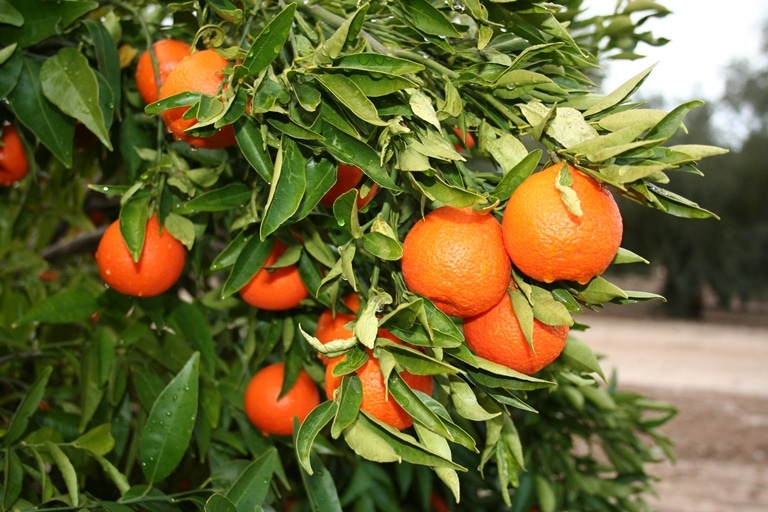
Section 18 exemption sought in fight against HLB in Florida
HLB is one of the most devastating diseases of citrus worldwide.It was estimated that more than 100 million infected citrus trees have been destroyed by the disease throughout Asia.More than four million trees have been eliminated in Brazil since the first report in São Paulo in 2004.

While the use of antibiotics and bactericides for the treatment of Huanglongbing (HLB, also known as greening disease) in citrus is not altogether a new idea, the latest research is pointing to new possibilities that utilize dual treatments of the two compounds that could provide additional treatment strategies for a troubled U.S. citrus industry.
HLB is one of the most devastating diseases of citrus worldwide. The century-old disease was first reported in China in 1919, but most likely originated in Taiwan in the 1870s. It was estimated that more than 100 million infected citrus trees have been destroyed by the disease throughout Asia, while more than four million trees have been eliminated in Brazil since the first report in São Paulo in 2004.
For the latest on western agriculture, please check out Western Farm Press Daily and receive the latest news right to your inbox.
In the U.S., HLB was first discovered in August 2005 in South Florida and currently is endemic in multiple states from the U.S. East Coast to the West Coast, including the three largest citrus-growing states, Florida, Texas and most recently California.
The HLB-associated bacteria infect all cultivated citrus species and relatives, including commercially produced oranges, grapefruit, lemons, limes, and other citrus fruit.
“It’s a hundred-year-old disease, but to date there is no cure. It’s a killer, a true killer for the citrus industry,” said Swadeshmukul Santra, associate professor in the NanoScience Technology Center at Central Florida University (UCF) and one of several researchers who received U.S. Department of Agriculture funding earlier this year to test bactericide as an effective treatment in citrus.
The bacteria that causes HLB is carried by the Asian citrus psyllid, a tiny insect that feeds on leaves and stems of infected citrus trees, and then spreads the bacteria to adjacent citrus groves.
Evan Johnson of the University of Florida’s (UF) Citrus Research and Education Center at Lake Alfred is the project director for the grant, which also involves a dozen other investigators from Oak Ridge National Laboratory (ORNL), Auburn University, New Mexico State University and Ohio State University.
Testing products
While research has directed commercial attention to new treatment strategies, industry products are being tested and have been available to researchers to help promote industry and academic cooperation in defining new methods of treatment.
In addition, the Citrus Research and Development Foundation has been working with academic and industry researchers and farmers to explore new and better ways to manage and control HLB and other citrus diseases.
Foundation Program Manager Tom Turpen says new research in the fight against HLB has been promising.
"Our research investments have created a very significant pipeline of compounds that have potential to treat HLB, including a wide variety of chemical classes that are effective. What we have to do now is face the regulatory process constraints first so that the products that are currently used in food crops and have tolerance and residue and use pattern requirements. These need to be specified and those will be the first products to be commercialized," he said earlier this year.
Turpen said Oxytetracycline and Streptomycin are currently registered for use in citrus but researchers need to document efficacy for HLB and delivery methodology for those compounds.
"There's also plant essential oils, turpenoid type compounds that are going to have a fast regulatory approval cycle if we can show their efficacy, and hopefully in short order we can begin clinical trails on some of these types of compounds," he added.
Section 18 sought
Last week the Florida Fruit and Vegetable Association (FFVA) and the Citrus Research and Development Foundation (CRDF) joined third party industry researchers announcing they are seeking a Section 18 Emergency Exemption from the U.S. Environmental Protection Agency for the use of three products to battle citrus greening disease.
The Section 18 is being requested for the benefit of all citrus growers in Florida.
The products are:
Fireline 17WP, Oxytetracycline hydrochloride (17 percent oxytetracycline) - a bactericide/fungicide;
Firewall 50WP, Streptomycin sulfate (50 percent Streptomycin) - a bactericide/fungicide and
Mycoshield, Oxytetracycline Calcium complex (17 percent Oxytetracycline) - an antibiotic.
These products would be used in a coordinated program to manage tree health in HLB-infected citrus in Florida.
Communication with Florida Department of Agriculture and Consumer Services and the U.S. EPA has been ongoing, and the application was forwarded to the Florida Department of Agriculture for its review on Oct. 12.
The data used for assembly of the petition were developed through joint funding and coordination between the registrants, AgroSource, Inc., and Nufarm Americas, Inc., and CRDF for the products being requested.
Florida agriculture officials say they are hopeful new research and testing of compounds made possible by Section 18 product-use exemptions will help develop more effective ways to combat HLB disease in citrus worldwide.
About the Author(s)
You May Also Like





